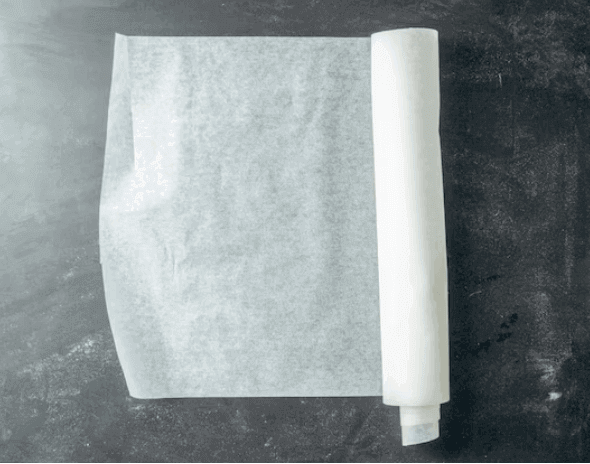
What is Glassine paper and what it is used for?
Introduction
Glassine paper is a unique and versatile type of paper that has been in use for various applications for many years. It is known for its distinct properties that make it highly sought after in specific industries. In this article, we will explore what glassine paper is, its numerous applications and much more.
Table of contents
- What Is Glassine Paper Made Of?
- The Properties
- Common Uses
- Glassine Paper in the Food Industry
- Glassine Paper in the Philately World
- Archival and Conservation Use
- Art and Craft Applications
- Glassine Paper in Packaging
- Eco-Friendly Aspects of Glassine Paper
- How to Choose the Right Glassine Paper
- Caring for Glassine Paper Products
- Advantages and Disadvantages
- Alternatives to Glassine Paper
- Conclusion
What Is Glassine Paper Made Of?
It is made from a specific type of paper pulp that undergoes a process to make it transparent and grease-resistant. The pulp used is usually wood-derived and is chemically treated to give it its characteristic properties. The transparency is achieved by subjecting the paper to a supercalendering process that smoothens and flattens the surface, resulting in a glass-like appearance.
The Properties
It is popular for its unique characteristics. It is grease-resistant, translucent, and has a smooth, polished surface. Its transparency allows for the visibility of the contents inside, making it suitable for various applications. The grease-resistant nature of it makes it an excellent choice for packaging food and other items that may contain oils or fats.
Common Uses
It finds applications in various industries due to its properties. Some common uses include:
Food Industry
In the food industry, glassine paper is useful for wrapping candies, chocolates, and other confectionery items. Its grease-resistant nature ensures that the product remains fresh and the packaging doesn’t become soggy.
in the Philately World
Stamp collectors often use this paper to store and protect their stamps. The transparency of the paper allows collectors to view their stamps without removing them from the protective cover.
Archival and Conservation Use
It is also widely useful in the preservation of documents, artwork, and photographs. It helps protect these items from dust, moisture, and other environmental factors.
Art and Craft Applications
Artists and craft enthusiasts use it for various projects, including tracing, wrapping delicate art pieces, and creating unique effects in their work.
Packaging
This paper is an eco-friendly alternative to traditional packaging materials. It is used in gift wrapping, bakery packaging, and as an inner liner for envelopes.
Eco-Friendly Aspects of Glassine Paper
One of the key advantages of this paper is its eco-friendliness. It is biodegradable, recyclable, and made from renewable resources, making it a sustainable choice for various applications. Choosing glassine can help reduce the environmental impact of your packaging and storage needs.
How to Choose the Right Glassine Paper
When selecting this paper, consider factors such as thickness, size, and purpose. Different applications may require its specific variations, so it’s essential to choose the right type for your needs.
Caring for Glassine Paper Products
To ensure the longevity of your glassine paper products, it’s important to store them in a cool, dry place away from direct sunlight and extreme temperatures. Proper care will help preserve the quality and appearance of the paper.
Advantages and Disadvantages
Like any material, this also has its pros and cons.
Advantages:
- Transparency: It is transparent, allowing for visibility of contents inside.
- Grease-Resistance: It is highly resistant to grease and oil, making it ideal for food packaging.
- Smooth Surface: It has a polished surface that enhances its appearance.
- Eco-Friendly: It is biodegradable, recyclable, and made from renewable resources.
- Versatility: Suitable for various applications in the food, philately, art, and archival industries.
Disadvantages:
- Limited Strength: This paper is relatively delicate and not as strong as some other materials.
- Water Sensitivity: It is not water-resistant, so it may not be suitable for applications where moisture is a concern.
- Cost: This paper can be more expensive than alternative materials in some cases.
- Limited Durability: It may not be the best choice for heavy-duty or long-term applications.
- Specialized Use: It is best suited for specific applications and may not be a one-size-fits-all solution.
From where can you get this paper?
You can obtain it from a variety of sources. Stationery stores, art supply shops, online retailers, and packaging suppliers often carry this in various sizes and quantities, making it easily accessible for a wide range of applications.
Alternative Papers
In situations where this paper might not be the best fit, alternatives such as wax paper or parchment paper can be useful. These options offer different properties and may be more suitable for specific applications.
Conclusion
In conclusion, this paper is a versatile and eco-friendly material with a wide range of applications. Its unique properties make it a valuable choice in industries like food, philately, archiving, art, and packaging. Whether you’re looking to protect your stamps, package confectionery, or create beautiful art, this paper has you covered.
FAQs
1. Is glassine paper environmentally friendly?
Yes, it is eco-friendly as it is biodegradable and made from renewable resources, making it a sustainable choice for various applications.
2. Can I use glassine paper for packaging food?
Absolutely! Glassine paper’s grease-resistant properties make it an excellent choice for wrapping candies, chocolates, and other confectionery items.
3. How should I care for glassine paper products?
To ensure the longevity of its products, store them in a cool, dry place away from direct sunlight and extreme temperatures.
4. Are there any alternatives to glassine paper?
Yes, alternatives such as wax paper or parchment paper are good for specific applications that require different properties.
5. What is the supercalendering process used in making glassine paper?
The supercalendering process is a method that smoothens and flattens the surface of the paper, giving it a polished appearance and making it transparent.





